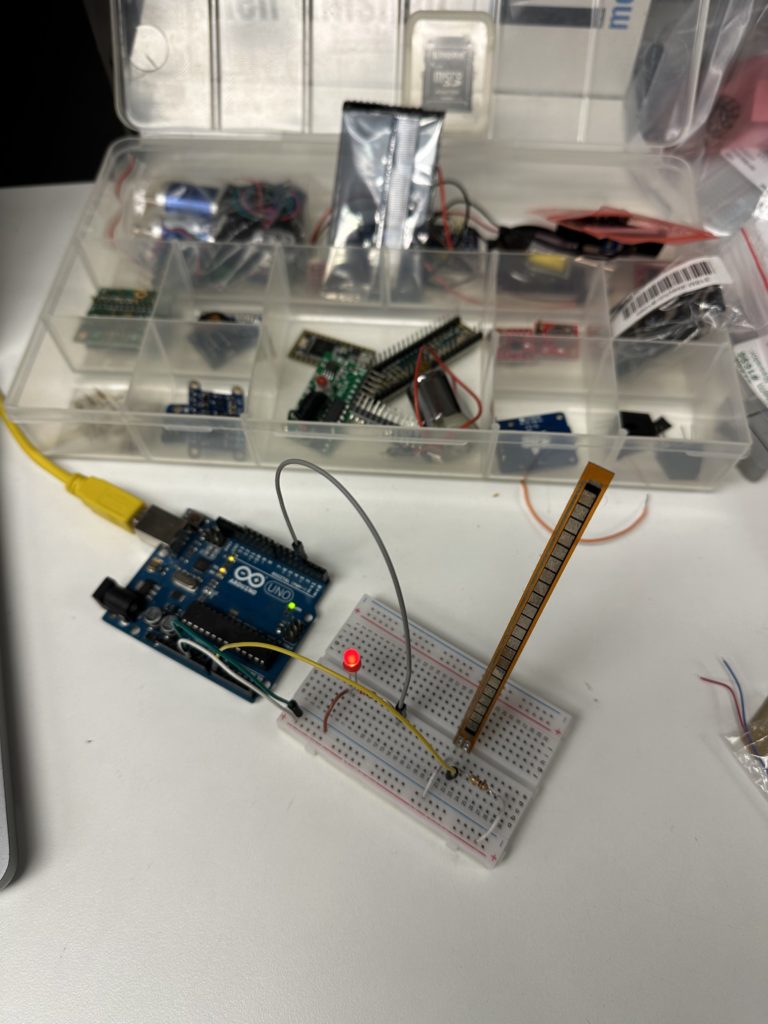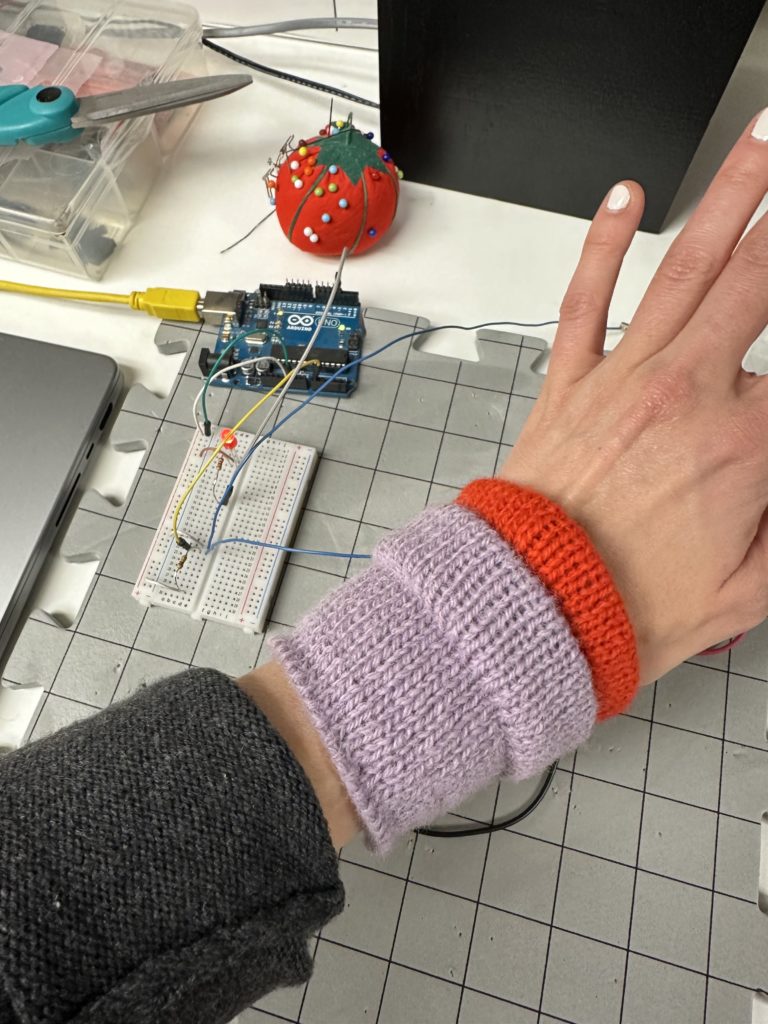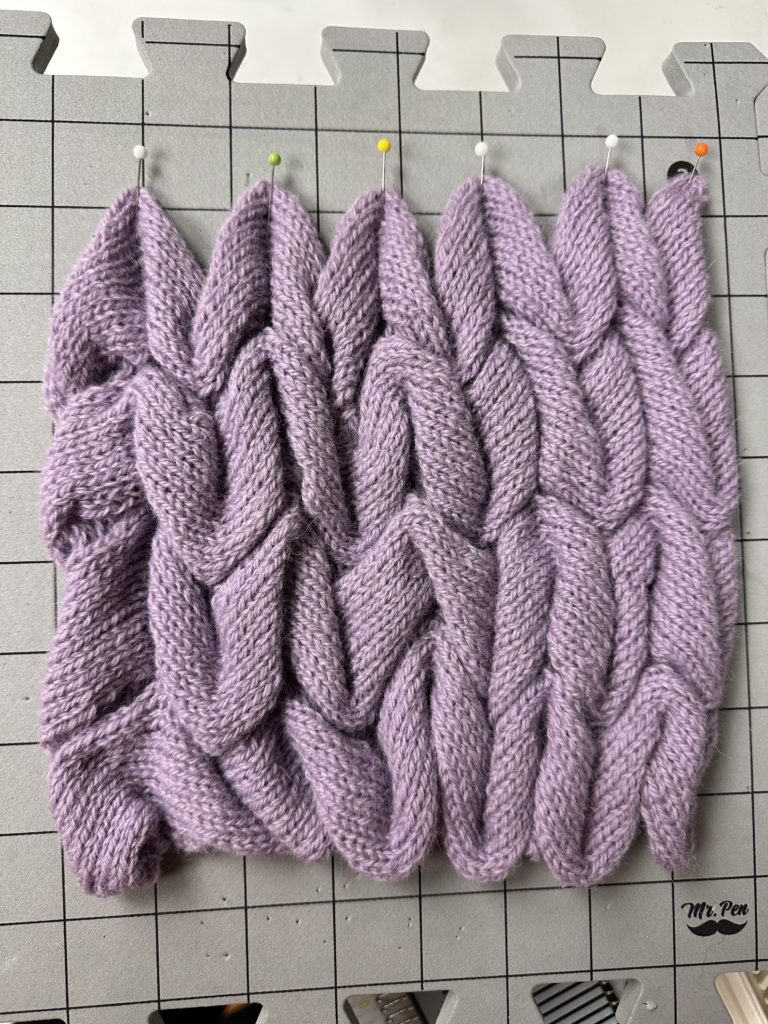
Over the past few days at MAL I’ve been setting up my workspace and getting the knitting machine up and running, as well as doing an inventory of all the sensors I have available.
I’ve been reading/re-reading a few of the books that are informing the development of my work during this residency. Daniela K Rosner’s book Critical Fabulations: Reworking the Methods and Margins of Design has informed my practice with soft circuitry and knitting over the past few years. The book aims to examine the ways in which craftwork, often performed by feminized labor, has been central to the history of engineering. (I’ve written about this before in my blog post about weaving core memory). Engineering is craftwork, craftwork is engineering.
The title of Rosner’s book is inspired by the term “critical fabulations,” coined by feminist scholar Saidiya Hartman: “By playing with and rearranging the basic elements of the story […] I have attempted to […] imagine what might have happened or might have been said or might have been done.” This has resonances with Donna Haraway’s concept of “re-figuring,” which she explores in her book Staying With the Trouble. Rosner defines critical fabulations this way:
Critical fabulations are ways of storytelling that rework how things that we design come into being and what they do in the world. They deconstruct design methods to open different understandings of the past that reconfigure the present, creating new opportunities for a just future […] By making stories and catalyzing new embodied ways of knowing, fabulations draw attention to the contested nature of knowledge productions.
Daniela K Rosner
The goal of the book isn’t just to draw attention to these forgotten, commodified forms of labor. Rosner states that her goal is to use these stories and histories “to envision our relationships to design anew” by exploring their “ongoing knots, troubles, and possibilities” (7). By revisiting these stories and interrogating/disrupting the most commonly accepted histories of computing and engineering, she aims to open up new possibilities for imagining different design futures.
I’ve been thinking a lot about these ideas as I’ve been experimenting with electronics and textiles in my own work. I’ve been struck recently by how much of today’s conversations about tech are driven by a hype cycle that relies on a total ignorance to – or intentional erasure of – the past. This is why I was excited specifically to explore ideas around knitting, stringing, ‘fabulating’ alternative futures at the MAL. Walking around the lab, I’m surrounded by dozens of vintage computers, operating systems, games, and hundreds of software manuals and books that aimed to tell the story of what our technological future would look like.
This week, I have been exploring different ways in which knits can serve as interfaces. I want to make my knitting interactive through different techniques of weaving/knitting/sewing some of the hardware into my knits. I’ve also been trying out new techniques for knitting 3D structures and shapes on the knitting machine, as it will make the work overall more tactile and dimensional.


On Wednesday, I started by wiring up a flex sensor with my Arduino. Flex sensors are typically used in garments like gloves for detecting a finger bending, for instance. As the sensor is flexed, the resistance across the sensor increases, which allows for variable values. I knit a simple swatch with some folded pleats. I slid the flex sensor into the pleat, and ran a simple test for adjusting the brightness of an LED.
Code below (pulled from this tutorial) that demonstrates how I mapped resistance values being received from the sensor (0-1023) to the LED’s Pulse Width Modulation (0-255).
void loop(){
value = analogRead(flexPin); //Read and save analog value from potentiometer
Serial.println(value); //Print value
value = map(value, 700, 900, 0, 255);//Map value 0-1023 to 0-255 (PWM)
analogWrite(ledPin, value); //Send PWM value to led
delay(100); //Small delay
}I ran this experiment with a simple Arduino, but one of my goals this week is to set up some swatches with the FLORA. FLORA is an Arduino-compatible microcontroller that was designed specifically for designing wearables and soft circuitry. Because it’s round and has eyelets, the microcontroller can be easily sewn with conductive thread into a garment.
On Thursday, I knitted a 3D zig zag pattern inspired by this blog post on ruched or manual pull-up effects in knits. I was so excited with how this experiment turned out, and I want to explore more of these 3D surfaces in my work, especially because I think their tactility lends themselves to interactivity: You just want to touch them.


That night I had a minor heart attack when the knitting machine carriage inexplicably jammed. I spent two hours troubleshooting (and accidentally stabbing myself with needles) before calling it a night. The next day I did a more thorough cleaning of the carriage and discovered a tiny metal gear that had gotten stuck. I unstuck it and all was well.